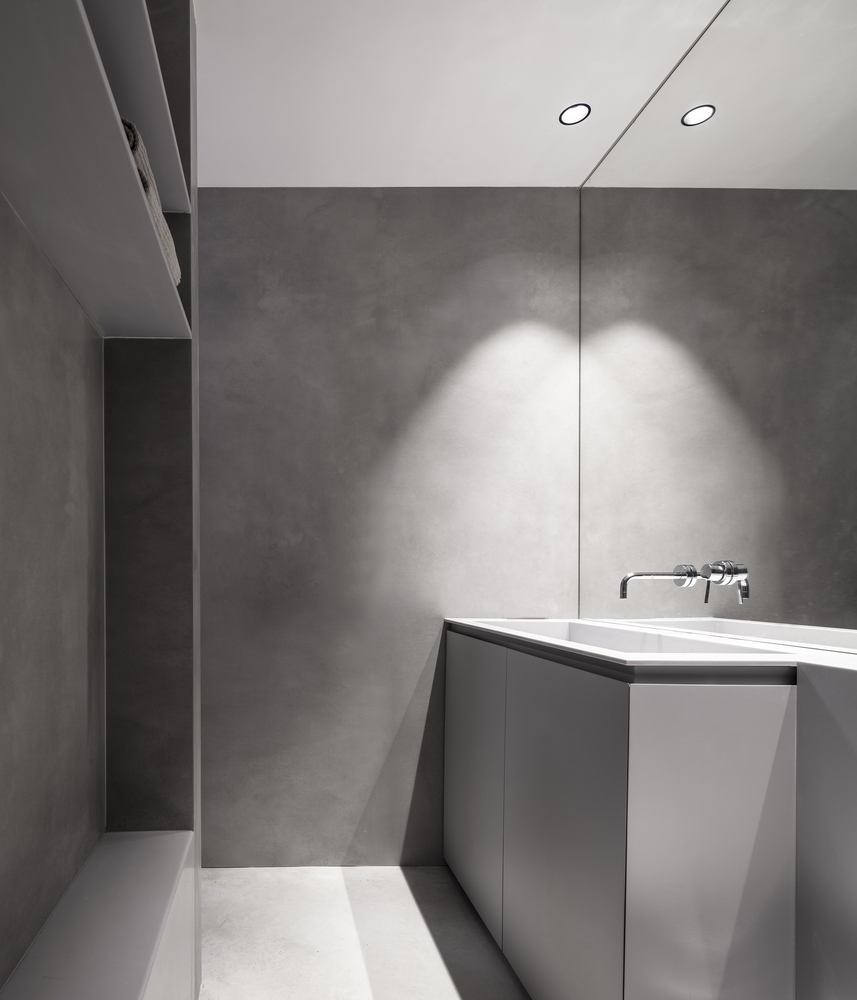Chaaltun House tescala
2017-10-06 08:00
© Leo Espinosa
(利奥·埃斯皮诺萨)


架构师提供的文本描述。建筑通过重新安排元素来接近自然。在Casa Chaaltun,这种构图是试图唤起和解释墨西哥尤卡坦半岛的自然和文化背景,挑战主流观念和对其天然材料的共同使用。
Text description provided by the architects. Architecture approaches nature by rearranging its elements. In Casa Chaaltun, this conformation was an attempt to evoke and interpret the natural and cultural context of the Yucatan Peninsula, in Mexico, challenging the mainstream perception and common use of its natural materials.
Model. Image Courtesy of tescala
模特。塔夫拉的形象礼貌


为了使这个程序适应地块的几何学,它被划分为三个区域:私人、社会和服务;卷的设计是相应的。四个卷由一个主长轴连接,这是该项目的脊骨。其中两个是坚固的,面向南和西,解决隐私,同时,它保护内部和阴影的其他。剩余的体积是轻轻浮动,产生了一个双高天花板在地面水平,面向东北。
To adapt the program into the lot’s geometry, it was divided into three zones: private, social and services; the volumes were designed accordingly. Four volumes are connected by a main long axis, which is the project’s spine. Two of them are solid, facing south and west, solving the privacy and, at the same time, it protects the interior and shadows the others. The remaining volumes are lightly floating, generating a double height ceiling in the ground level, facing to the northeast.
© Leo Espinosa
(利奥·埃斯皮诺萨)




© Leo Espinosa
(利奥·埃斯皮诺萨)


这一卷的类型学的特点是它的正面。固体是由一系列错开的墙壁形成的,允许交叉通风和巨大的自然光收入而不增加热量。相反,漂浮的体积特征是大理石格子正面,允许一个漫射光的入口,也遮蔽了内部。
The volume’s typology is characterized by its facades. The solids are formed by a series of offsetted walls, allowing crossed ventilation and a great natural light income without a thermal gain. In contrast, the floating volumes feature a marble lattice facade, permitting the entrance of a diffuse light and also shadowing the interior.
大理石格子立面是一个具有挑战性的设计,它的最终解决方案给了房子身份:一个由四百八十六个垂直部分组成的系统,每一个都将两块大理石拼贴在一个钢架上。每一件作品都焊接在社会容量的主要结构上。灯光是在月光中激发出来的,因此每一件作品都照亮了相邻的部分,并将其光线反射到大理石中。
The marble lattice facade was a challenging design and its final solution gave identity to the house: a system formed by four hundred eighty six vertical pieces, each one unites two plaques of marble secured to a steel frame. Every single piece is welded to the main structure of the social volumes. The lighting is inspired in the moonlight, so that each piece illuminates the adjacent, bouncing its light into the marble.
Sketch. Image Courtesy of tescala
素描。塔夫拉的形象礼貌


Sketch. Image Courtesy of tescala
素描。塔夫拉的形象礼貌


体积解决方案在建筑中有一系列连续的空洞:四个开放和扩展内部空间;虽然这是功能性的,但这些空间也是环境的自然和文化参照的空间,赋予了Casa Chaaltun独特的身份。
The volumetric solution comes with a continuous series of voids in the building: four spaces that open and expand the interiors; although this is functional, these are also the spaces where the natural and cultural references of the environment take place, giving Casa Chaaltun its unique identity.
© Leo Espinosa
(利奥·埃斯皮诺萨)


尤卡坦半岛以其奇特的景观而闻名,其中包括有板状树根的大树和天然的结晶水池,名为“锡诺”(玛雅语为Dzonoot);这个池塘具有非凡的美,其特点是它的新鲜度;石灰石形成了白点,可以在清澈的水中看到深绿色和蓝色的颜色。由于这个天然而令人叹为观止的池塘,游泳池就像一座微珠:牛津灰色的火焰花岗岩给人一种深度的感觉,给水以更深的绿色-蓝色;在第二层,大理石格子的正面环绕着游泳池的区域。此外,阿拉莫树的存在表明有一个风景区,这就是为什么其中之一被放置在入口庭院周围的石灰石墙。
Yucatán Peninsula is known for its peculiar landscapes, which include large trees with tabular roots and natural ponds of crystalline water called cenotes (dzonoot in maya); this ponds are of remarkable beauty and characterized for its freshness; the limestone that forms the cenote allows to see the dark green and blue colors in the clear water. Because of this natural and stunning ponds, the swimming pool resembles a cenote: an oxford grey flamed granite gives a sensation of depth and a darker green-blue color to the water; floating in the second level the marble lattice façade encloses the pool area. Also, Alamo trees suggest the presence of a cenote, this is why one of them is placed in the access patio surrounded by limestone walls.
© Leo Espinosa
(利奥·埃斯皮诺萨)


在尤卡坦地区的景观中,人们通常会看到岩石、道路和墙壁因土壤中的矿物质而呈强烈的红色生锈;红色庭院的灵感来自这些生锈的元素,形成了高耸的有色混凝土墙,并放置了一棵Chaka树(以其红色树皮而闻名的区域性乔卡树)。地块上的另一种特有树种是马亚的哈金树(jabín),这是该地区少数几种随季节变化颜色的树种之一。这棵树是主卧室大厅和上层露台设计的突破口,那里绿树成荫的枝条支撑着空间,营造出一种舒适的氛围。
In the regional landscape of Yucatan it's common to see how rocks, roads and walls rust in an intense red color because of the minerals in the soil; the inspiration for the red patio was taken from these rusty elements, making tall tinted concrete walls and placing a Chaka tree (regional tree form Yucatan known for its red bark). Another endemic tree in the plot is a Jabín (habín in maya), one of the few in the area that changes its color through seasons. This tree was a breaking point to the design of the master’s bedroom lobby and the upper level terrace, where the leafy branches brace the space giving a cozy ambiance.
© Leo Espinosa
(利奥·埃斯皮诺萨)


所有这些自然上下文的不同引用都是项目中的常量,遵循相同的设计路线,总是优先考虑用户的福祉,并使用顺序空间的孔径。Casa Chaaltun是阈值(厨房-酒吧-社会-游泳池-花园)的连接,打开了一个扩展的视觉(球场湖-球场-丛林)。
All these different references of the natural context are a constant in the project, following the same line of design and always prioritizing the user’s well being and playing with the aperture of the sequenced spaces. Casa Chaaltun is the concatenation of thresholds (kitchen-bar-social-pool-garden) that opens into an extended visual (course-lake-course-jungle).








































.jpg)



























Architects tescala
Location Mérida, Mexico
Area 900.0 m2
Project Year 2016
Photographs Leo Espinosa
Category Houses
Manufacturers Loading...































